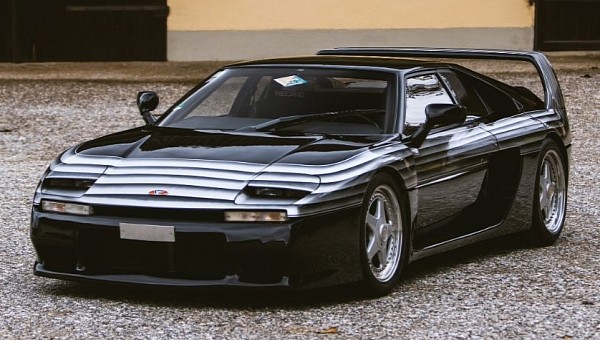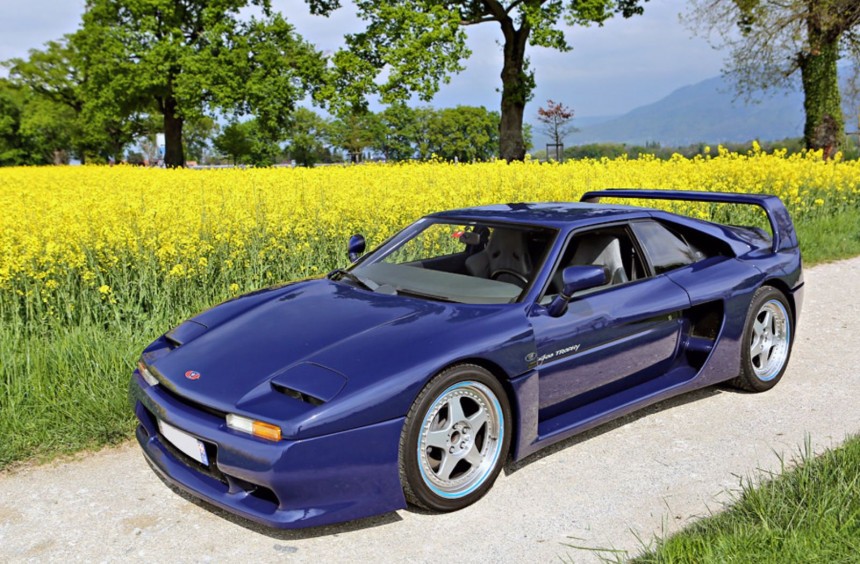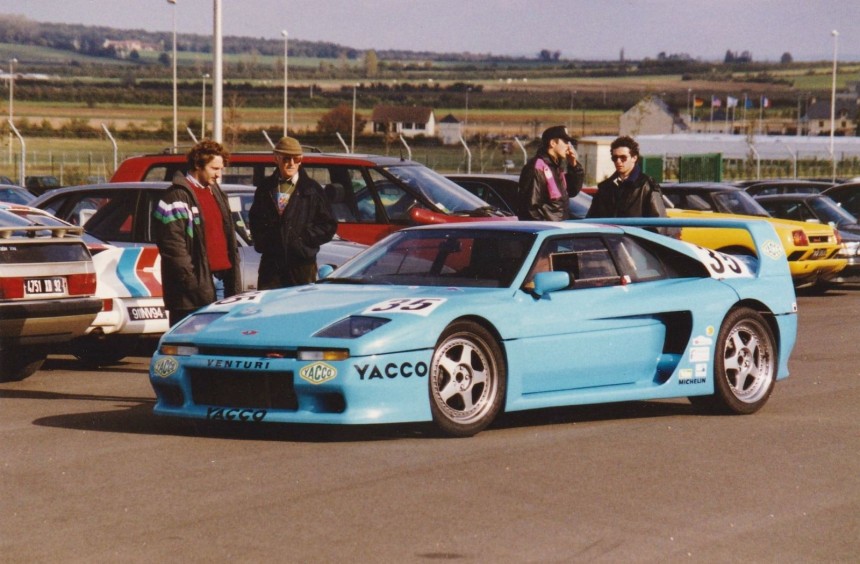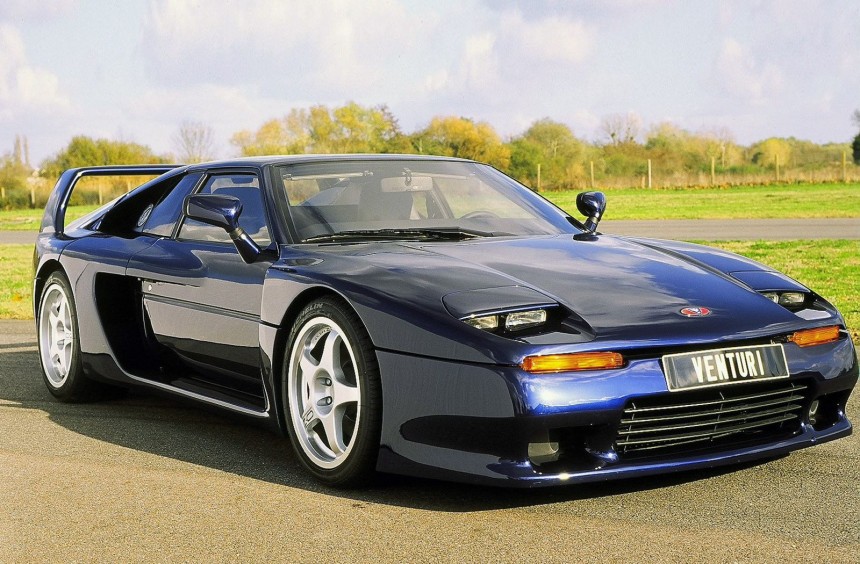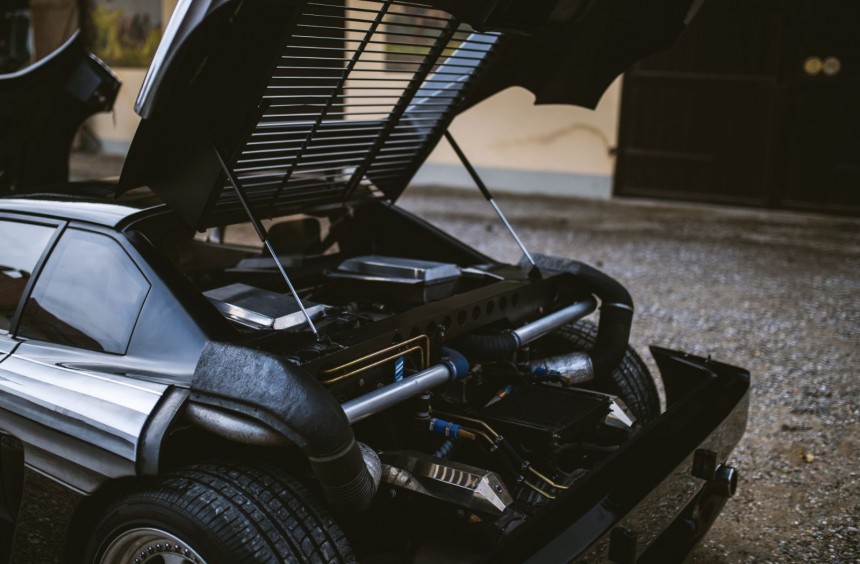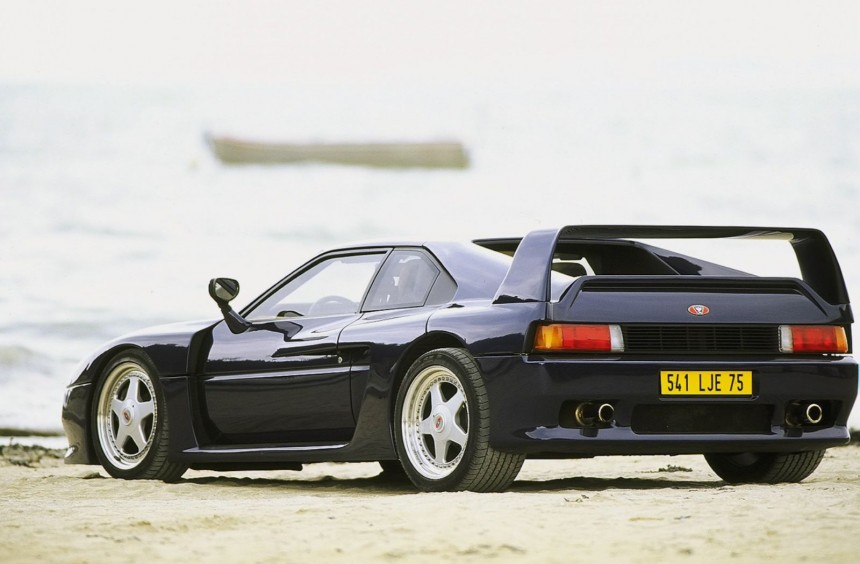There’s no other decade that spawned more thrilling exotics than the 1990s. While epic rides like the McLaren F1, Porsche 911 GT1, or Lamborghini Diablo come to mind, other interesting supercars that have long been forgotten originated during that period.
Established carmakers from France were building and selling plenty of cars around the world during the 1990s. But, unlike Italian, English, or German manufacturers, purebred supercars were not among them.
One can argue that the beautiful EB110 was an exception because it came from Bugatti, the brand that became an icon during the 1920s and 1930s, when it was developing some incredible road and race cars in the Alsace region of France. However, when the EB110 was introduced, Bugatti was owned by an Italian businessman and it was headquartered in Modena, Italy.
Since it was designed and assembled in Italy, the EB100 doesn’t really count, but there was one carmaker that built supercars in France during the 1990s, albeit few still remember its awesome machines.
If you follow the Formula E championship, the name Venturi will ring some familiar bells. It was the first team to officially join the competition back in December 2013 and competed for the next eight seasons, with its best result coming in the 2021-2022 season, when it finished second overall in the teams’ standings.
But Venturi’s roots can be traced all the way back to the 1980s. It was founded in 1984 by two former Heuliez engineers, Claude Poiraud and Gérard Godfroy, who wanted to put France on the map of supercar manufacturers.
Nearly a decade later, their ambition of becoming serious contenders for the likes of Ferrari, Lamborghini, or Porsche seemed possible. The company built some interesting road cars and was involved in various motorsport competitions, including Le Mans or the BPR Global GT Series.
Unfortunately, Venturi never managed to reach the heights that its founders envisioned, and slowly but surely faded into obscurity. Gildo Pallanca Pastor bought the brand in 2000 and shifted focus towards the world of electric vehicles.
Unquestionably, the most exciting car developed by Venturi during its ICE years was the 400 GT. This model started life in 1992 as a thoroughbred GT race car called 400 Trophy.
Designed from the ground up by the company’s founders, it was conceived in 73 examples that were sold to privateers who wanted to take part in a one-make championship called Venturi Gentlemen Drivers Trophy. The competition included six races that took part on some of Europe’s most legendary tracks, such as the Circuit de la Sarthe (aka Le Mans), Magny-Cours, or Nürburgring.
In addition to the vehicle, customers received the engineering support needed to compete and the option of converting their Trophy into a road-legal car at the end of the season. Apart from these conversions, the company also introduced a pure road version, called 400 GT, at the 1994 Paris Motor Show.
Since it started life as a race car, the 400 GT was built around a lightweight chassis using the latest technologies available at the time. To keep the entire car’s weight as close to the 1,000 kg (2,204 lb) mark as possible, the structure was put together using tubular steel beams.
It was equipped with a competition-spec suspension system with high-adjustable shocks and carbon-ceramic brakes, which made it the first-ever road car to feature this technology.
If I had to pick my all-time favorite carmaker, I’d choose the Ferrari in a heartbeat. Apparently, Claude Poiraud and Gérard Godfroy also had an affinity for the Italian brand because its cars obviously served as inspiration for some of Venturi’s models, including the 400 GT.
From the shape of the front end to the side vents and all the way to the rear spoiler, the French supercar’s body looked like it was designed by Pininfarina for its Maranello-based client. Because of these similarities, the 400 GT was often called the French Ferrari F40.
Unlike the famed Italian carmaker, Venturi didn’t have the resources to build its own engines, so for the 400 GT, they went for an existing powerplant: PRV V6 jointly developed by Peugeot, Renault, and Volvo.
The PRV came out in 1974, so by the early 1990s, it had a reputation for reliability and power potential. Powering a multitude of sedans, wagons, minivans, but also sports cars (most notably, the DMC DeLorean), it was cheap and available in many displacements.
Working with a 3.0-liter version, Venturi added an intercooled twin-turbo system among other race-bred components and linked the mid-mounted engine to a five-speed manual.
With a little over 400 hp on tap, thanks to the boosted unit, the 400 GT reportedly sprinted to 62 mph (100 kph) in 4.1 seconds, which made it a bit quicker than the F40, as well as the fastest production car ever manufactured in France.
Unfortunately, there’s little information available when it comes to the 400 GT. We know that 73 400 Trophy race cars were built during the first part of the 1990s, but there are conflicting reports about the road-legal 400 GT.
Some sources say that the only road version ever developed was the one shown at the 1994 Paris Motor show and 10 to 15 were converted race cars. However, other sources say that an additional 13 cars were actually built for the street from the ground up by the factory.
Regardless of the exact numbers, the Venturi 400 GT is undoubtedly one of the rarest supercars of the 1990s. It’s also one of the coolest, even though few still remember it ever existed.
But, despite its rarity, surviving examples are by no means hot commodities on the collector’s market. One example of a race-bred Trophy converted into a street-legal 400 GT was auctioned off by RM Sotheby’s in 2019, fetching around $150,000.
Another popped up on the Bring a Trailer platform last year with bids reaching $183,000, but since the owner’s reserve was not met, it didn’t sell. This shows that the Venturi 400 GT is among the cheapest 1990s supercars that money can buy.
Although it doesn’t feature badges from an iconic carmaker, it’s a beautiful, high-performance, race-bred machine that’s worth every penny.
In the YouTube video below posted by Dangermuffin, you can watch a Top Gear review of the 400 GT from 1995.
One can argue that the beautiful EB110 was an exception because it came from Bugatti, the brand that became an icon during the 1920s and 1930s, when it was developing some incredible road and race cars in the Alsace region of France. However, when the EB110 was introduced, Bugatti was owned by an Italian businessman and it was headquartered in Modena, Italy.
Since it was designed and assembled in Italy, the EB100 doesn’t really count, but there was one carmaker that built supercars in France during the 1990s, albeit few still remember its awesome machines.
A brief history of Venturi
But Venturi’s roots can be traced all the way back to the 1980s. It was founded in 1984 by two former Heuliez engineers, Claude Poiraud and Gérard Godfroy, who wanted to put France on the map of supercar manufacturers.
Nearly a decade later, their ambition of becoming serious contenders for the likes of Ferrari, Lamborghini, or Porsche seemed possible. The company built some interesting road cars and was involved in various motorsport competitions, including Le Mans or the BPR Global GT Series.
Unfortunately, Venturi never managed to reach the heights that its founders envisioned, and slowly but surely faded into obscurity. Gildo Pallanca Pastor bought the brand in 2000 and shifted focus towards the world of electric vehicles.
The motorsport origins of the 400 GT
Designed from the ground up by the company’s founders, it was conceived in 73 examples that were sold to privateers who wanted to take part in a one-make championship called Venturi Gentlemen Drivers Trophy. The competition included six races that took part on some of Europe’s most legendary tracks, such as the Circuit de la Sarthe (aka Le Mans), Magny-Cours, or Nürburgring.
In addition to the vehicle, customers received the engineering support needed to compete and the option of converting their Trophy into a road-legal car at the end of the season. Apart from these conversions, the company also introduced a pure road version, called 400 GT, at the 1994 Paris Motor Show.
A very competitive chassis topped off with a Ferrari-inspired body
It was equipped with a competition-spec suspension system with high-adjustable shocks and carbon-ceramic brakes, which made it the first-ever road car to feature this technology.
If I had to pick my all-time favorite carmaker, I’d choose the Ferrari in a heartbeat. Apparently, Claude Poiraud and Gérard Godfroy also had an affinity for the Italian brand because its cars obviously served as inspiration for some of Venturi’s models, including the 400 GT.
From the shape of the front end to the side vents and all the way to the rear spoiler, the French supercar’s body looked like it was designed by Pininfarina for its Maranello-based client. Because of these similarities, the 400 GT was often called the French Ferrari F40.
Powered by a mundane engine turned twin-turbo monster
The PRV came out in 1974, so by the early 1990s, it had a reputation for reliability and power potential. Powering a multitude of sedans, wagons, minivans, but also sports cars (most notably, the DMC DeLorean), it was cheap and available in many displacements.
Working with a 3.0-liter version, Venturi added an intercooled twin-turbo system among other race-bred components and linked the mid-mounted engine to a five-speed manual.
With a little over 400 hp on tap, thanks to the boosted unit, the 400 GT reportedly sprinted to 62 mph (100 kph) in 4.1 seconds, which made it a bit quicker than the F40, as well as the fastest production car ever manufactured in France.
One of the rarest, yet cheapest 1990s supercars that you can buy today
Some sources say that the only road version ever developed was the one shown at the 1994 Paris Motor show and 10 to 15 were converted race cars. However, other sources say that an additional 13 cars were actually built for the street from the ground up by the factory.
Regardless of the exact numbers, the Venturi 400 GT is undoubtedly one of the rarest supercars of the 1990s. It’s also one of the coolest, even though few still remember it ever existed.
But, despite its rarity, surviving examples are by no means hot commodities on the collector’s market. One example of a race-bred Trophy converted into a street-legal 400 GT was auctioned off by RM Sotheby’s in 2019, fetching around $150,000.
Another popped up on the Bring a Trailer platform last year with bids reaching $183,000, but since the owner’s reserve was not met, it didn’t sell. This shows that the Venturi 400 GT is among the cheapest 1990s supercars that money can buy.
Although it doesn’t feature badges from an iconic carmaker, it’s a beautiful, high-performance, race-bred machine that’s worth every penny.
In the YouTube video below posted by Dangermuffin, you can watch a Top Gear review of the 400 GT from 1995.
